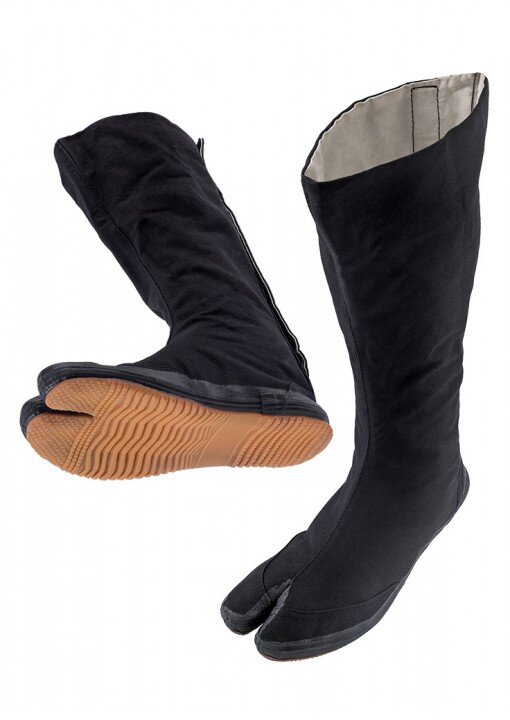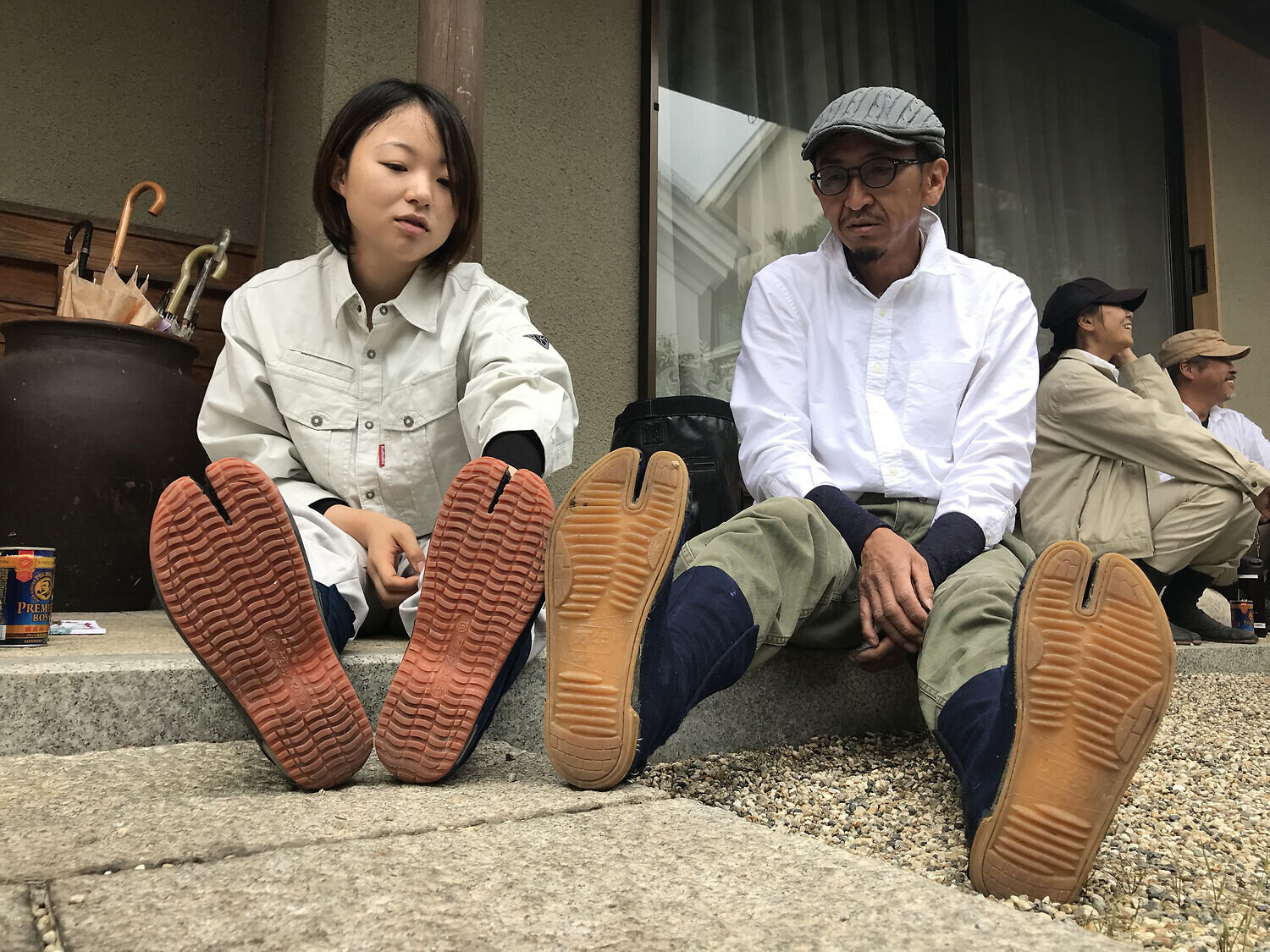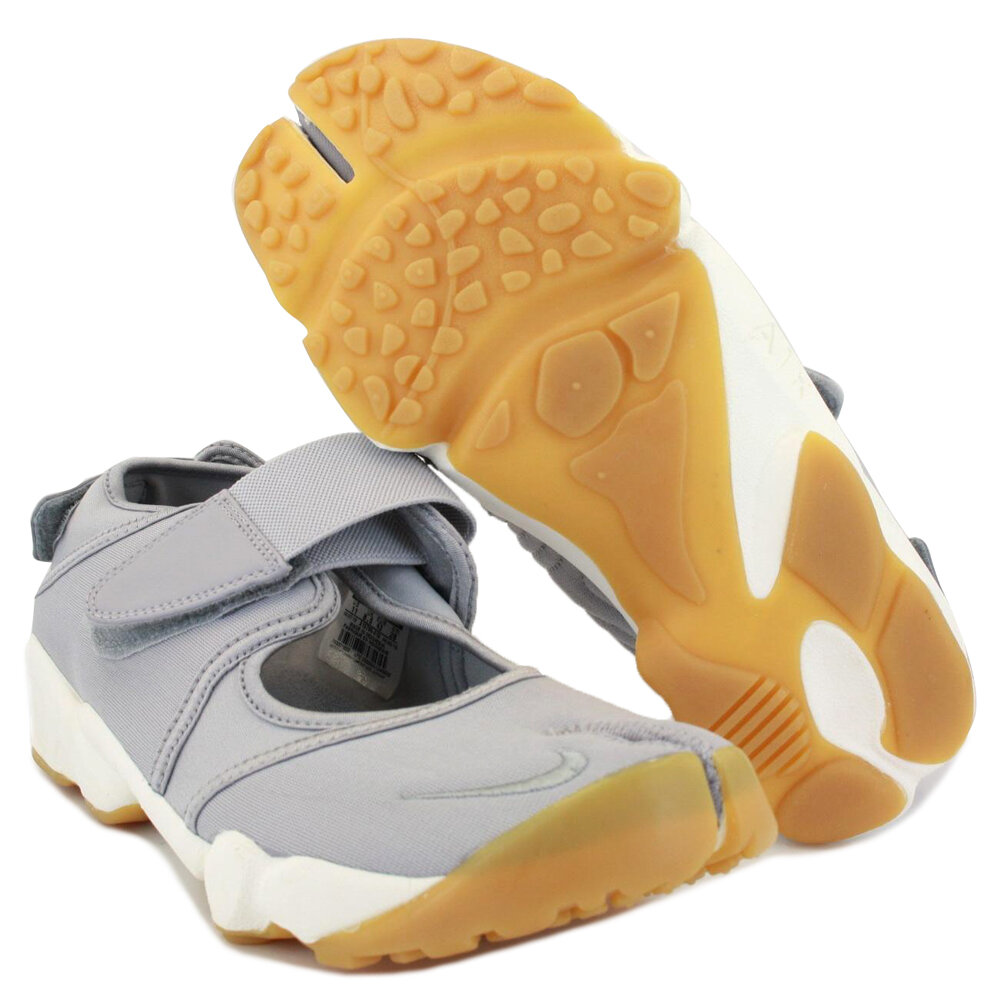Two Reasons Ninja Shoes Have a Split-Toe
/Every design in Japan has a purpose.
Image courtesy of dax-sports.com
Have you ever wondered why tabi, a.k.a. ninja shoes, have that separated toe? When you see them, I bet they make you think of ninja climbing walls and spying on important people to gain information.
Or, maybe you think about the Foot Clan in Teenage Mutant Ninja Turtles. Either way, these shoes are, and were, real.
And still used today.
Were Tabi shoes made for ninja, though? We’ll answer that later.
The rubber-soled Jika-Tabi is a real work shoe designed for construction, farmers, rickshaw drivers, and other manual laborers.
Gardening in Japan is perfect for Jika-Tabi shoes. Photo courtesy of niwaki.com.
When I lived in Osaka, I remember watching construction workers and being surprised by their split-toe Tabi boots. “Whoa.” I thought, “Even construction workers are ninja in Japan.”
I’ve enjoyed wearing Jika-Tabi before, and I’ll admit, something is soothing about having a toe separate from the others. The history behind the design was something I had to look into, though.
Why are tabi shoes designed in this way?
Reason #1
Back in the 15th century, Japan began importing cotton from their nearby neighbor, China. The new fabric gave birth to innovative products, like socks.
The Geta, a shoe that looks like a flat wooden platform sandal with a leather thong strap, was the footwear of choice, and new socks had to fit their structure. The result was creating an ankle-height cotton sock with a separation between the big toe and the rest of the foot.
Essentially, the original Tabi.
Photo courtesy of jpninfo.com.
Reason #2
Many years later, in the 20th-century, mass-produced rubber led to the birth of Jika-Tabi: Tabi that made contact with the ground like shoes. First introduced by Tokujirō Ishibashi, whose family owned a rubber business — his brother, Shōjirō founded Bridgestone tires — Ishibashi’s Jika-Tabi is closer to the version of the shoe we’re accustomed to seeing.
Different from its fashionable sock counterpart, the Jika-Tabi was a work shoe. In fact, the split toe was thought to aid in mobility during labor work and considered more agile than the solid closed shoe design.
Image found on Pinterest.com.
Wait a minute. What about Ninja? Well, there’s a common misconception that the tabi shoes were originally made for martial arts practitioners and that ninjas currently wear tabi shoes.
This image is false and was created when people watched kabuki theater. The actors backstage in kabuki would all be covered in black to blend with the stage and not be seen.
As you probably guessed, the actors all wore tabi shoes, and the black clothes implied them to be ninjas sneaking around in the shadows. Therefore, creating a false image and conception.
Of course, that expanded overseas, and Hollywood chose to add the famous split-toe footwear into ninja movies.
And, as they say, “the rest is history.”
Form and function
If you’re working up high and need to stay steady while moving across scaffolding, I can see Jika-Tabi being a good shoe choice.
From my experience wearing them in Japan, you can easily feel the surface you’re standing on and better control your body.
This split-toe style has inspired the fashion world in the west with wild boots and shoe designs for men and women. Even Nike had a tabi running shoe a few years ago called Air Rift.
Nike Air Rift shoe image courtesy of ebay.com.uk.
If you’re interested in trying the Tabi shoe, I bet you can find plenty of different styles online. They’re pretty comfortable and will definitely make people give your feet a second look.
Struggling with creativity and putting your work out regularly? Join my email list and discover how to upgrade your mindset here.









